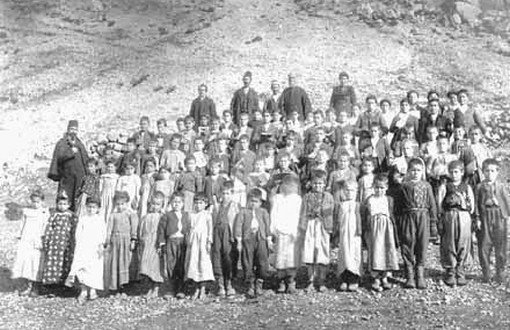“Run, Go, Keep My Light Burning”

Tells Anahit Ghazaryan
When I learnt about the project “100 Years… Real Stories” one of my ex-students, Susanna Stepanyan, was at my place. During the conversation I told her about the project and found out that Turks had saved her Grandfather during the Genocide. She told me the story of her paternal Grandfather.
They came from Shatakhy. Her Grandfather was 13-14 years old during the Genocide years. Turks gathered all residents of Shatakhy and locked in the church intending to burn them. As Susanna said her Grandfather’s family was quite large. Her Grand-grandfather Stepan, feeling what destiny his family, including his son Hakob, would have, tried to find a way out. But what could he do when everybody’s hands were tied behind? Suddenly he noted that one of the church walls had a crack and the stone could be removed. Hakob’s father started hitting the wall with his back and hands. Even at that moment he didn’t forget his religion and didn’t hit with his legs: it is a sin to hit a church wall with one’s leg. His wife was crying asking him to do something and save their son, her Hakob.
In the end, he managed to remove a stone from that church that had been standing for centuries and told his son, “Run, go, keep my light burning.” [in Armenian that expression means to continue the family, tr.] Hakob was a thin boy and, prowling through that hole in the church wall, he began running. Suddenly he heard a Turk yelling, “The giaour’s son ran away.” Then a shot followed… Hakob felt his hands tied behind his back get warmer but he kept running frantically. He ran without knowing where he had got. Then he suddenly fell unconscious.
Waking up Hakob found himself in a Turk’s house. A pregnant Turkish woman stood beside him and his hands were tied with some rags. At that moment he realized he was wounded but the first thought he had was that he was free, that he had run away. The Turkish woman fed him and made him hide as the boy was searched for everywhere. The woman offered Hakob to lie under the bedding. Soon he could hear Turks yelling and the woman’s answer who assured them the boy wasn’t in her house. In the end the soldiers went away. Then the Turkish woman gave the boy some food, showed him a safe way to take. This is how Hakob, the son of Stepan from Shatakhy survived and years later told his grandchildren, “When I was going away I smelt something burning. I turned back… The church was burning…”
He ran and got to the village of Avshar, Ararat region, got married and had children. As his granddaughter said he always wished to cross the Araz River and go and see his native house again…
* Under the headline "100 years... Real Stories" Information, Analytical Agency "Armedia" presents real stories from the lives of the Genocide survivors (the stories are told by the survivors’ descendants, relatives, close people) collated by "European Integration" Non-Governmental Organization within the project "The Turk Who Saved My Life". The stories are special as the hero/heroes fled the claws of the Great Genocide through the direct or indirect assistance of a Turk/Turks (a neighbor, well-wisher, friend or witness of the event). The project is implemented with the assistance of the United Kingdom Foreign and Commonwealth Office. The presented materials, opinions and conclusions introduce the views of the authors and participants and do not reflect the position of the United Kingdom Government.
* Click here to read the article in Turkish.
Other pieces in the series:
* Aris Nalcı talks about "The Turk Who Saved Me" Project: Story Project Aims to Face the Genocide Without Prejudice
* “A Fragment from My Grandmother’s Nostalgia Remained in Us”
* "What Was the Fault of the Poor Armenian Nation..."
* "My Reminiscences Are Undone Like a Ball of Wool..."
* "Two Offshoot Survivors of Exterminated Dynasties Vowed to Weave Together and Become a Thick Oak"




.jpg)
.jpg)